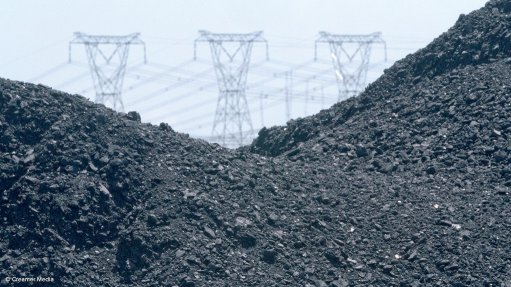Opinion: Transforming South Africa's manufacturing sector to embrace green and avoid falling behind
Transforming South Africa's manufacturing sector to embrace green practices is not just an environmental necessity but a strategic imperative to remain competitive on the global stage, writes Nedbank Commercial Banking national manager Amith Singh, adding that immediate action is needed to ensure industry adapts to these changes and thrives in a carbon-neutral future.
We need to have a direct discussion about the state of manufacturing in South Africa. The EU's Carbon Border Adjustment Mechanism (CBAM) is not just on the horizon – it's quickly approaching and set to fundamentally reshape our industry. The CBAM will impose tariffs on imports based on their carbon content, meaning our goods will face much higher costs unless we drastically cut our carbon footprint. This isn't just a financial inconvenience; it's a direct threat to our competitiveness on the global stage.
Our heavy reliance on coal-fired power is the first major hurdle. This dependence makes our manufacturing sector one of the most carbon-intensive in the world. As a result, our exports to the EU are vulnerable to the new CBAM tariffs. Projections indicate that costs could rise substantially – by 20% for steel and iron and up to 225% for chemicals like ammonia. This isn't just about higher expenses; it's about potentially losing market share and jeopardising the future of our industry. The latest Producer Price Index (PPI) results show that the annual producer price inflation for final manufactured goods decreased from 5.1% in April to 4.6% in May, indicating a decline in the manufacturing sector. Specifically, the PPI for chemicals, rubber and plastic products increased by only 3.4% year-on-year, reflecting a slower growth rate. This decline could be further amplified if we do not adapt to the changing market demands and regulations.
We need to ask ourselves some tough questions. How can we speed up the transition from coal to renewable-energy sources? The South African government’s Energy Action Plan aims to improve energy security and end loadshedding by integrating more renewables into the grid, but this is just the beginning. Solar, wind and other renewable sources must become the core of our energy strategy. Are we investing enough in these areas? How can we fast-track their adoption? This shift is critical because our current energy infrastructure is outdated and heavily reliant on coal, massively contributing to our carbon footprint.
Consider the steel industry as an example. Technologies like green hydrogen direct reduced iron (GH-DRI) can help us produce green steel, opening new markets and reducing emissions. Are we fully leveraging these technologies? Public-private partnerships and international climate finance are essential to making these transitions economically viable. We must explore these avenues aggressively. The steel sector can lead the way in green manufacturing but requires substantial investment and a strategic pivot towards new technologies.
Smart energy management is another crucial area. Deploying systems like PowerRadar can reduce our energy consumption and emissions. These systems provide real-time data, enabling us to optimise energy use and reduce waste. But are we fully utilising these tools across our operations? This technology cuts costs and improves efficiency and sustainability, giving us a competitive edge. Energy management systems can provide transparency in consumption, helping identify areas where improvements can be made, thus reducing overall carbon emissions.
Policy and regulatory support are equally important. Introducing a carbon tax in 2019 was bold, but more robust measures are needed. We must create an environment that supports rapid decarbonisation and provides clear incentives for green investments. Are our current policies aligned with global climate goals? How can we enhance them to support our transition? The government needs to take a more aggressive stance on climate policies, providing subsidies for green technologies and penalising carbon-intensive practices.
Let's recognise the potential economic benefits of decarbonisation. While the initial costs may be high, the long-term gains in competitiveness, economic resilience, and job creation are substantial. Developing renewable-energy infrastructure, adopting green technologies, and shifting towards sustainable practices will create new opportunities across the value chain. Are we ready to invest in these areas and reap the benefits? The manufacturing sector stands to gain from early adoption of green technologies, positioning itself as a leader in sustainable practices.
Additionally, we must consider the broader implications of our actions. Decarbonising our manufacturing sector will contribute to global efforts to combat climate change, positioning South Africa as a leader in sustainable development. This is not just about compliance or avoiding tariffs; it's about taking a proactive stance on climate action and setting an example for others to follow. By taking the lead, we can influence other sectors and countries to follow suit, creating a ripple effect in global sustainability efforts.
The journey towards carbon neutrality is challenging but also an opportunity to transform our sector. We can turn these challenges into competitive advantages by embracing renewable energy, adopting cutting-edge technologies, implementing smart energy management systems, and building strong public-private partnerships. The time to act is now, and we cannot afford to wait. The stakes are high, and the consequences of inaction are severe.
In conclusion, the path to carbon neutrality is clear. It is not just an environmental necessity but a strategic imperative. The stakes are high, but the rewards are even higher. Let's rise to the challenge and make carbon neutrality a reality for South Africa's manufacturing sector. This is our moment to lead, innovate and secure a sustainable future for our industry and country. Let's seize it. We have the resources, the knowledge, and the capability. What we need now is the will and the commitment to make it happen. Let's not look back and wish we had done more. Let's act now and ensure South Africa's manufacturing sector thrives in a carbon-neutral future.
Article Enquiry
Email Article
Save Article
Feedback
To advertise email advertising@creamermedia.co.za or click here
Comments
Announcements
What's On
Subscribe to improve your user experience...
Option 1 (equivalent of R125 a month):
Receive a weekly copy of Creamer Media's Engineering News & Mining Weekly magazine
(print copy for those in South Africa and e-magazine for those outside of South Africa)
Receive daily email newsletters
Access to full search results
Access archive of magazine back copies
Access to Projects in Progress
Access to ONE Research Report of your choice in PDF format
Option 2 (equivalent of R375 a month):
All benefits from Option 1
PLUS
Access to Creamer Media's Research Channel Africa for ALL Research Reports, in PDF format, on various industrial and mining sectors
including Electricity; Water; Energy Transition; Hydrogen; Roads, Rail and Ports; Coal; Gold; Platinum; Battery Metals; etc.
Already a subscriber?
Forgotten your password?
Receive weekly copy of Creamer Media's Engineering News & Mining Weekly magazine (print copy for those in South Africa and e-magazine for those outside of South Africa)
➕
Recieve daily email newsletters
➕
Access to full search results
➕
Access archive of magazine back copies
➕
Access to Projects in Progress
➕
Access to ONE Research Report of your choice in PDF format
RESEARCH CHANNEL AFRICA
R4500 (equivalent of R375 a month)
SUBSCRIBEAll benefits from Option 1
➕
Access to Creamer Media's Research Channel Africa for ALL Research Reports on various industrial and mining sectors, in PDF format, including on:
Electricity
➕
Water
➕
Energy Transition
➕
Hydrogen
➕
Roads, Rail and Ports
➕
Coal
➕
Gold
➕
Platinum
➕
Battery Metals
➕
etc.
Receive all benefits from Option 1 or Option 2 delivered to numerous people at your company
➕
Multiple User names and Passwords for simultaneous log-ins
➕
Intranet integration access to all in your organisation





















